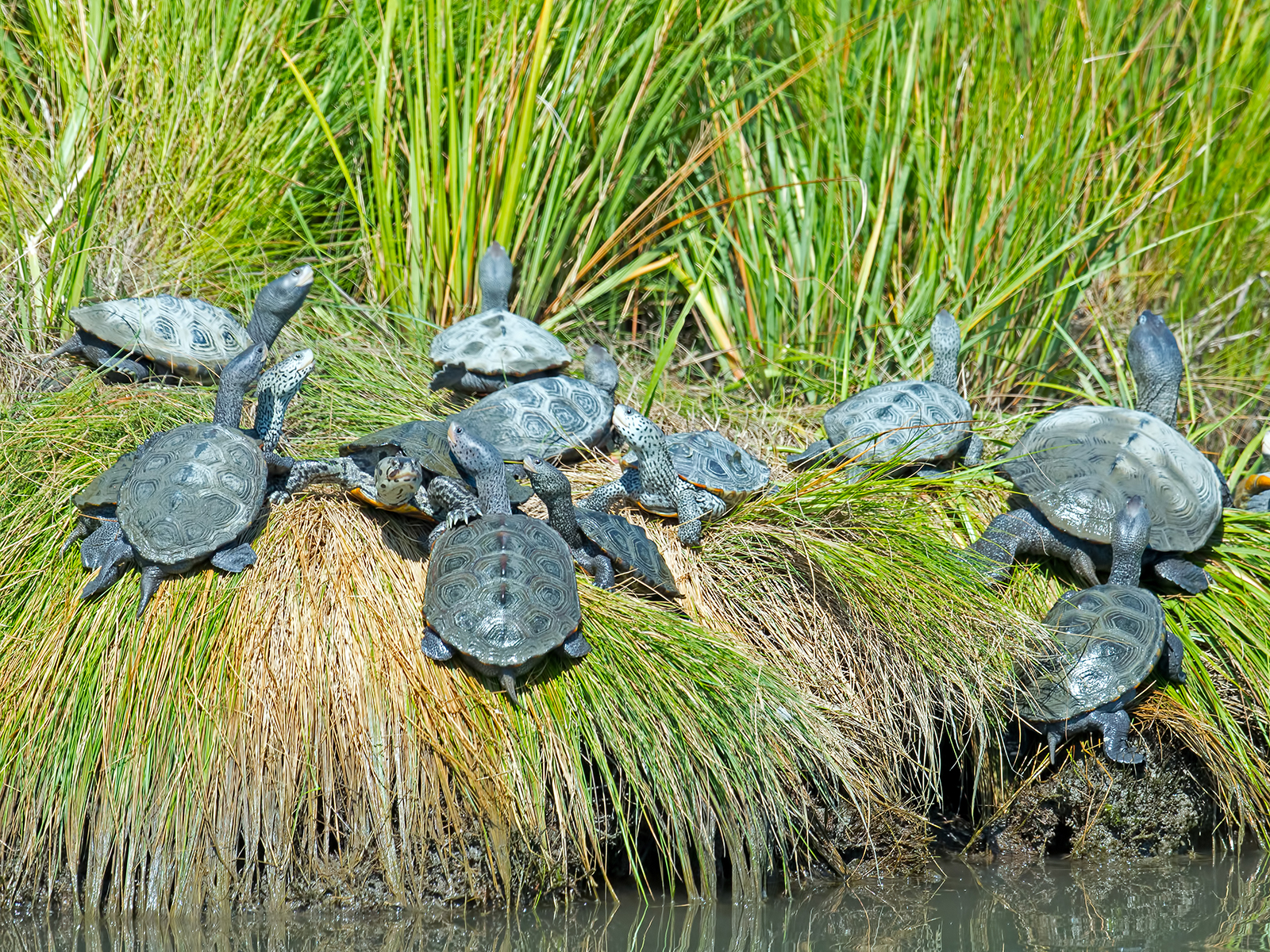Diamondback Terrapin
Malaclemys terrapin
Class
Reptilia
Order
Testudines
Family
Emydidae
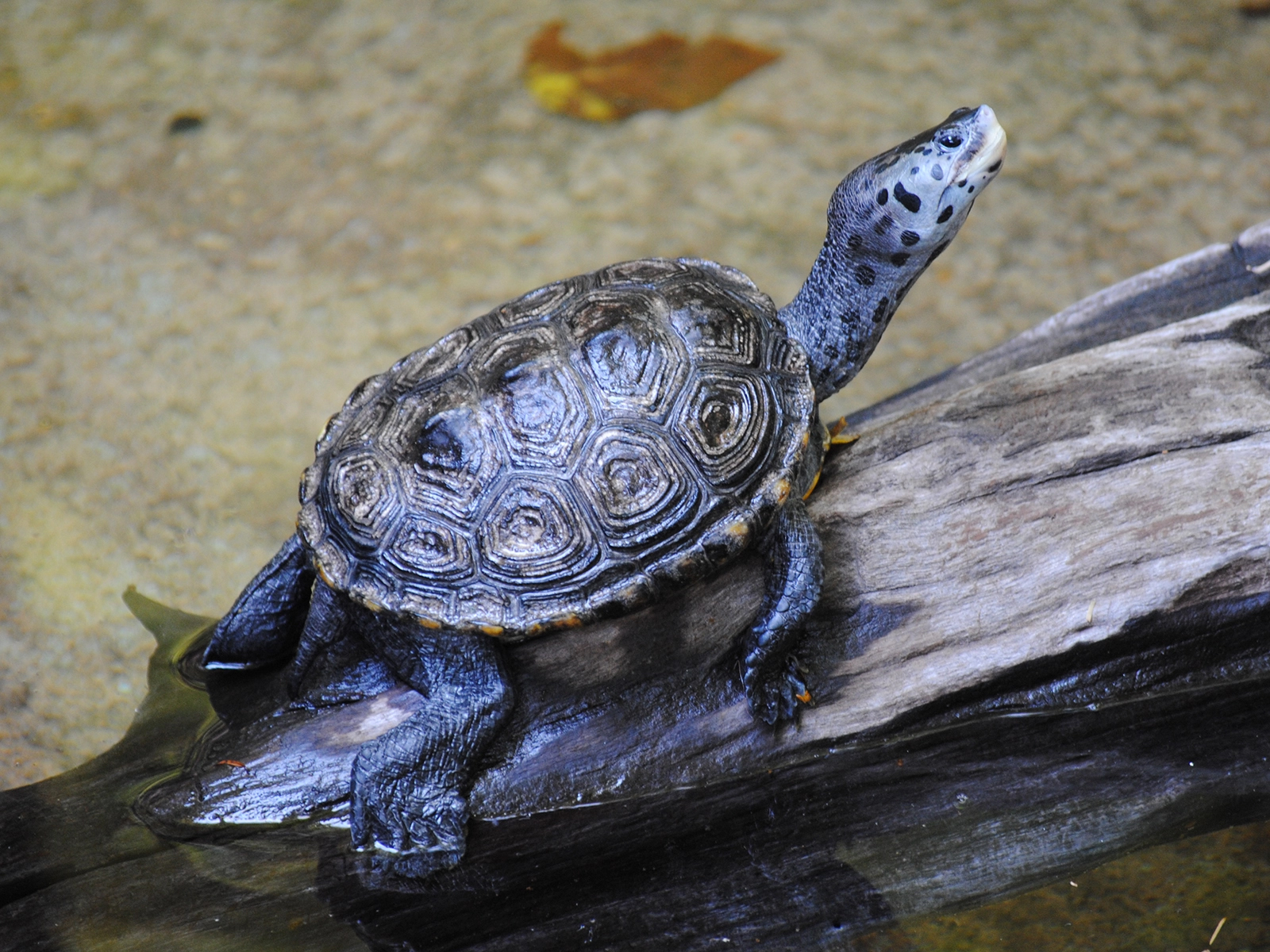
Reptilia
Testudines
Emydidae
Eastern and Gulf coasts of the U.S., from Maine to Texas
Male: 4 - 6 in
Female: 6 - 9 in
Brackish waters of coastal marshes, estuaries, tidal flats, and lagoons
Clutch: 3 - 18 eggs
Incubation: 60 - 85 days
Worms, crabs, snails, and fish
Vulnerable
Terrapins, like sea turtles, have glands that help remove excess salt from their bodies by secreting tears with high concentrations of sodium chloride.
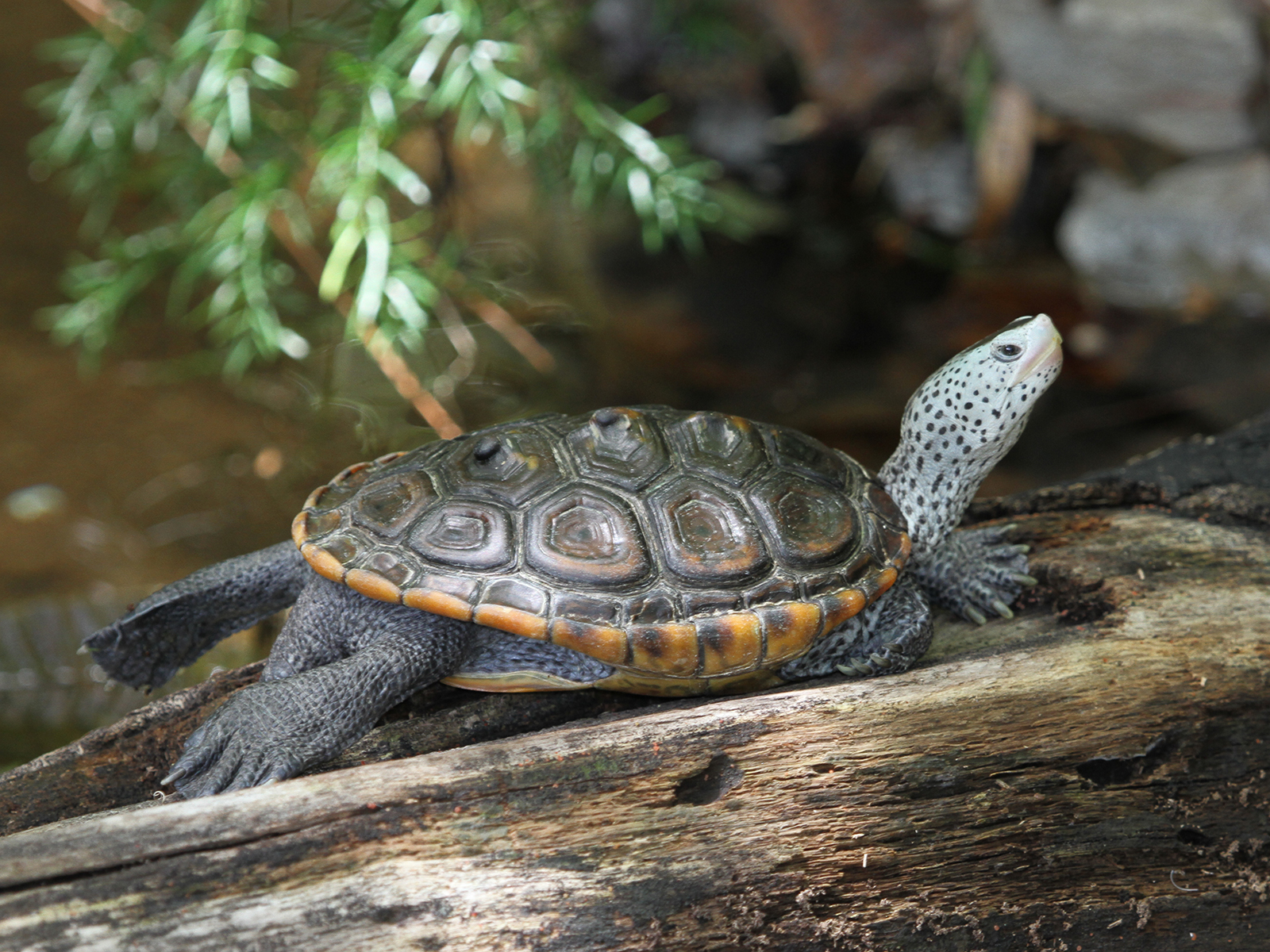
Their large webbed feet and muscular legs make terrapins strong swimmers, which helps them survive in environments with daily tidal changes and strong currents. Active during the day, the diamondback terrapin spends its time basking on land and finding food.
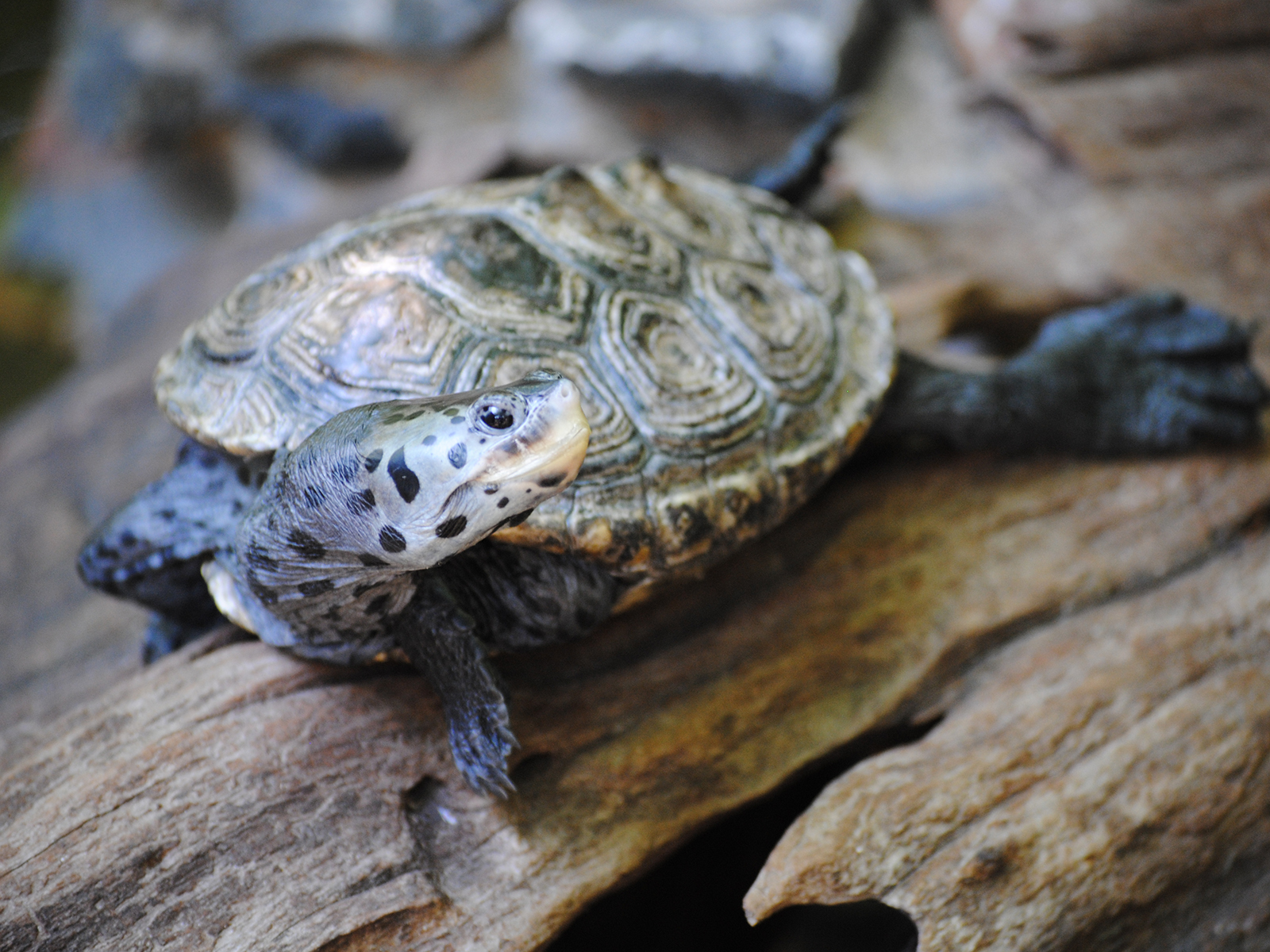
Female terrapins come on shore in June and July to make their nests and lay 3 to 18 eggs.
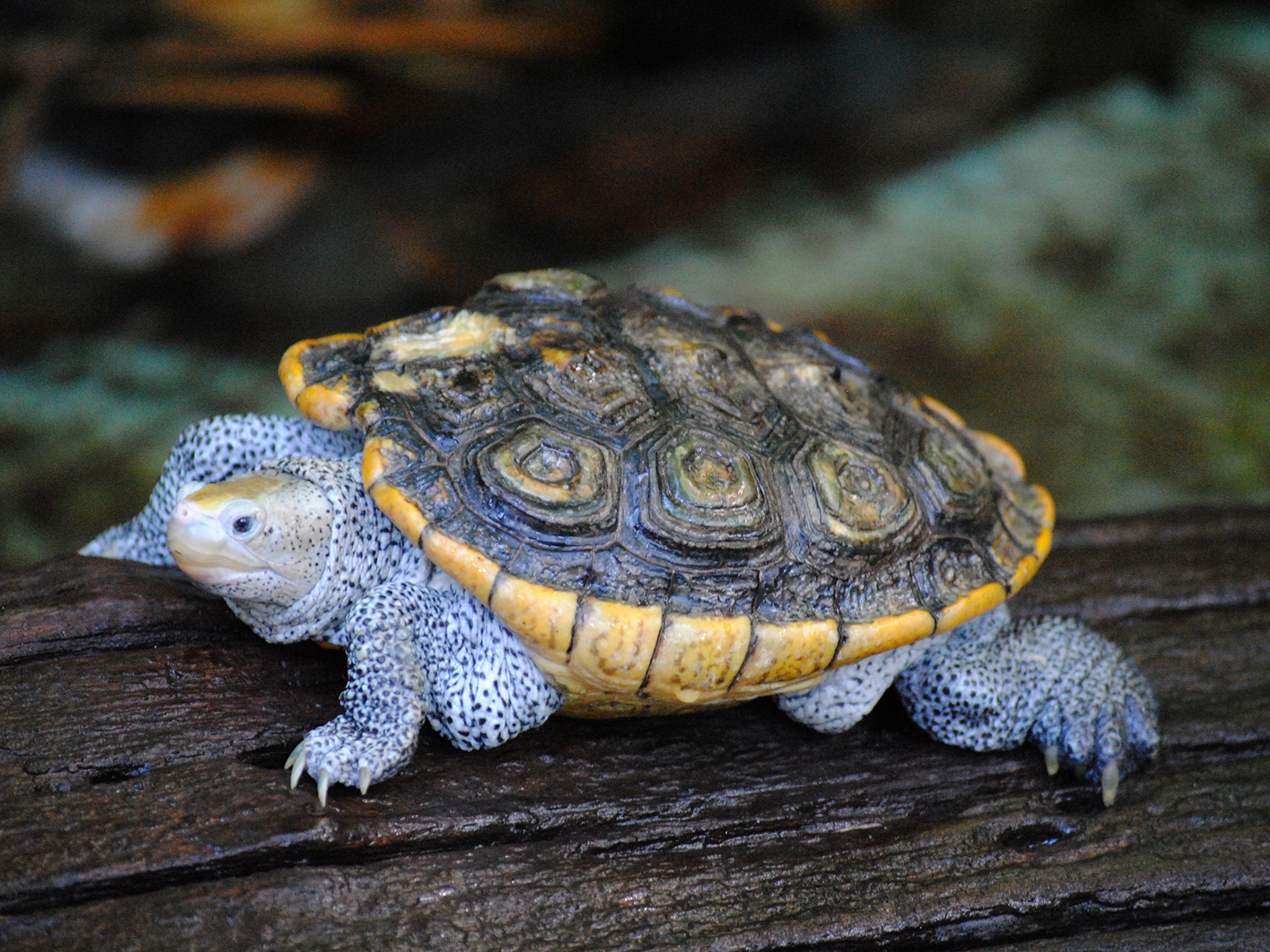
They face threats from habitat loss and degradation. In the late 1800s and early 1900s, they were hunted nearly to extinction for their meat, which was considered a gourmet delicacy.
Encourage the use of Terrapin Excluder Devices (TEDs): These small, rectangular devices fit into the entrance funnels of blue crab traps, preventing adult terrapins (especially nesting females) from entering and drowning, without significantly reducing the catch of marketable crabs.
Drive cautiously near marsh and coastal roads, especially during nesting season (roughly April to July) when females are most likely to cross roads in search of nesting sites.
Report your terrapin sightings to local conservation groups or through a community science platform like iNaturalist (look for specific terrapin projects like "Pin the Terrapin"). This helps researchers map their distribution and estimate population trends, which are currently not well-known in Louisiana.
